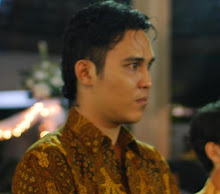Beringharjo market becomes part of Malioboro that is worth visiting. This market has been center of economy activity since years ago and its existence has philosophical meaning. The market that had been renovated several times symbolizes stages of human life that is busily engaged in its economy fulfillment. Furthermore, Beringharjo is also one of the 'four in one' poles (consisting of South Square, Sultan Palace, North Square, and Beringharjo market) symbolizing economy functions.
The area where current Beringharjo market lies used to be forest of banyan trees. Soon after the foundation of Ngayogyakarta Hadiningrat Kingdom, i.e. in 1758, the area was used as a place for economy transaction by the people of Yogayarkta and its vicinities. Only hundreds years later, namely in 1925, the transaction place had a permanent building. The name 'Beringharjo' was given by Hamengku Buwono IX, meaning that the place where banyan tree (bering) used to grow is expected to bring welfare (harjo). Now, tourists define this place as an enjoyable shopping place.
The front part and the western part of the market are the right places to find delicious traditional snacks. At the north side of the front part, you will find round brem (a kind of snack made from the extract of fermented tubers) that is softer than that of Madiun city and krasikan (sweet cake made from glutinous rice and palm sugar). In the south part, you will find bakpia cake filled with mung bean that is sold warm and wet snacks such as hung kwe and nagasari. Meanwhile, at the back part, usually they sell durable snacks such as ting-ting made of caramel mixed with peanut.
If you want to buy batik, Beringharjo is the best place because of its complete collections; ranging from batik cloth to batik clothes made of both cotton and silk materials, with the prices ranging from tens thousands to a million. Collection of batik cloth is available in west and north parts of the market, while batik clothes collection is available almost everywhere in the west part of this market. In addition to batik clothes, the west part of the market also offers traditional clothes: surjan, blangkon, and sarong both woven and batik printed ones. Sandals and bags sold at reasonable prices are available around the escalator of the west part of the market.
Stepping upstairs to the second floor, you will smell the aroma of Javanese herbs. Herbs such as turmeric that is usually blended with tamarind to produce special drink and temulawak to make bitter drink for medication purpose are sold here. Spices such as ginger (to make ronde drink or merely to be baked, boiled and mixed with crystal sugar) and cinnamon (to enrich the flavors of such drinks as ginger drink, coffee, tea and sometimes to substitute chocolate in cappuccino).
This is also the right market to hunt antiques. The center of antique goods is in east part of the third floor. There, you can get old typewriter, helmet made in 1960s with the front part of which is mica as high as one's nose and some other items. On the same floor, you can get used items of good quality if you want. Various kinds of good quality used imported goods such as shoes, bag, and even clothes are sold at much cheaper prices compared to the original prices. Of course, carefulness in choosing is needed.
After completing your going around in the market, it is time for you to explore the area around the market with not less interesting offers. The area at the north of the market that used to be popular as Chinese Kampong is the most popular place. You can find oldies cassettes of musicians in 1950s that are rarely found in other places at the most expensive price of 50,000 Rupiah. Besides, there are Buddha effigies in different poses costing 250,000 Rupiah. For collectors of old money, they can get the ones from various countries, even the ones utilized in 1930s.
To quench your thirst, special cold drink of Yogyakarta, namely cendol ice, is the right choice. This cold drink from Yogyakarta has richer flavor than the ones from Banjarnegara and Bandung. The contents are not only cendol (jelly-like substance made from glutinous rice but also cam cau (jelly-like substance made from cam cau leaves). Other drinks you can try are young coconut ice with palm sugar and the drink made from turmeric-tamarind and rice-great galingale mixtures. The price of the drink is cheap, namely 1,000 to 2,000 Rupiah.
Even though the market is closed at 05:00p.m, the dynamics of the merchants does not stop by that time. In front of the market, there are still many food sellers offering many kinds of special food. Martabak with various fillers, the sweet terang bulan mixed with chocolate and peanut, and the delicious klepon filled with palm sugar are sold every evening. At around 06:00p.m. until late at night, there is usually gudeg seller who also offers special cuisines of cow skin and variant of stir-fried vegetables with chili. While having your meals, you can listen to Javanese traditional music or have a talk with the seller who will address you friendly. It is just complete!

No comments:
Post a Comment